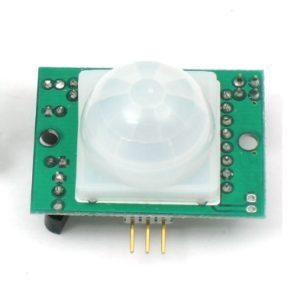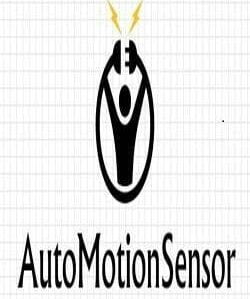Table of Contents
What is a Presence Detection Sensor (Proximity sensor)?
As the name itself tells, presence detection means sensing the availability or presence in a proximity or near place without contacting. Basically, it detects the presence, distance, or absence of an object using sensors based on different technologies like optical, LASER, ultrasonic, Hall effect, capacitive, etc. Using this type of device, we can make a variety of appliances as per the requirement.
Suppose we want that during night when you enter your room, the lights of the room start automatically and the moment you exit from the room the lights of the fan switch off automatically simply by sensing your presence. There can be many advantages of this presence sensing device. It can be utilized in a very efficient way.
Which sensor is used to detect presence?
You must have heard of PIR motion sensor. They are also a type of proximity device sensor which senses the presence of living beings like humans. It basically senses the infrared radiations coming out from human beings. But there are a variety of sensors available which used different technology for sensing and detection. Below is the list of sensors that can be used in industrial/home applications as per requirement.
Different proximity sensor types (Presence detector sensor)
- Photoelectric sensors- Photoelectric sensors use a beam of light to detect the presence or absence of an object. It is generally used when long sensing distances are required or when the item you want to sense is non-metallic.
- Photoelectric laser sensors-When sensing and detection is required with accurate and good precision, we generally use photoelectric laser sensor. These sensors are generally expensive than general purpose sensors. Laser proximity sensors have a range from centimeters to meters. It is widely used on highways to detect the over speeding vehicles.
- Inductive proximity sensors-Inductive sensors are generally used in applications when metal objects are to be detected up to the range of two inches.
- Capacitive sensors-This type of sensors are used when the distance to be detected is variable in nature and used with metallic and non-metallic objects. Though it is a challenging, but it can be achieved using capacitive sensors easily. It has a sensing range of 3 to 30 mm.
- Ultrasonic proximity sensor/microwave sensors-This type of presence detector is a self-contained solid state device and also comes in a variety of ranges from few centimeters to a meter. It uses ultrasonic waves/microwave to detect and sense a distant object. For example-The Omron E4C-DS30 proximity detector has a range of 50–300 mm, and E4C-DS80 has a range of 70–800 mm, and the E4C-DS100 sensor has a range of 90–1000 mm.
- Sensors capable of 3D sensing-3D sensing is the most expensive types of proximity sensor and detector. It is capable of detecting the presence in three-dimensional space and is the requirement of the future.

How does a presence detector work?
The working principle of a presence detector depends upon the application where it is being used. For example, a PIR motion sensor (IR proximity sensor) senses the thermal radiation/infrared radiations received from a living being and can be easily used as proximity switch sensor. It will work good when the human presence is to be detected, but may not perform good when the object to be detected is a metal or non-metal.
Some motion sensing or presence detectors uses ultrasonic waves to calculate the change in the distance of the object to be sensed. These sensors emit ultrasonic sound waves to the object distance and then sense the reflected ultrasonic waves from the distant object and thus calculate its distance from the sensor. And if there is a change in the distance, i.e. object is moving.
Some sensors use microwave (For example RCWL 0516) for detection and ranging. The principle used is similar, which is used in RADAR (Radio detection and ranging). The distance is calculated using the simple formula Distance = Speed * Time. The speed of microwave is the same as the speed of light, Time of echo or reflection is calculated by the sensor itself and the distance travelled by the microwave is twice the actual distance.

This principle is the base for almost all the types of presence or motion sensing sensors or devices. The main factor is its application and accuracy.
Suppose, you are outside from your home and the moment your comeback home, and you get inside your Wi-Fi coverage you can also use it as presence detection. OR you can use GPS (Global Positioning System) as your presence detection in some specified area. Similarly, Bluetooth/ NFC (Near Field Communication) is also an example of presence sensing technology.
So, it all depends upon your requirements. What is the application in which you are looking to use the presence detection. So it has a wide variety and heavily used technology.
What is a proximity sensor in a mobile?
You must have seen in your smartphone there is a feature called proximity sensor, when this feature is turned on and the moment you pick up the call and your smartphone touches with your ears to listen to the call, the screen goes blank automatically. This is because the proximity detector built inside your smartphone detects that your phone is in use and an object or obstruction (in this case your ears) is present very close to the smartphone screen. And thus, the display of your screen goes off during the call.
You can also check this feature while putting your palm in front of the proximity device sensor of your smartphone. This is a very important battery optimization feature present inside your smartphone which is generally not known to an individual. It saves a lot of battery juice from your smartphone.
Where is a proximity sensor in the smartphone?
Many people are not aware of this important feature present inside the smartphone, and they sometimes get annoyed also. Generally, a proximity sensor is placed near the front camera on the top side of the smartphone display. For knowing the exact position of proximity detector, kindly refer to your smartphone manual. Because it is not visible and is present beneath the display.
Motion sensing vs presence detection
Though roughly both are almost 90 percent same but when you go in precision, motion sensing is the detection of movement and presence sensing is the availability. In motion sensing, we are interested in the change between the distance of the source (sensor) and the object whose motion is to be sensed. While in presence detection we are only interested in the presence, distance is not considered till the object is in the range of the presence sensor.
Conclusion
Presence detection sensor or motion sensing is nowadays the backbone of the automation industry. The involvement of new technology and updates will further improve the automation industry and will prove a boon to the human beings. Almost everyone in this world uses these technologies and when you use something you must know the logic behind the system. We can use this in our DIY projects also to automate a switching application or job (For example Car parking sensors, motion sensor light, motion sensor alarm, motion sensor switch, proximity device, ground proximity in aircraft etc.) It is widely used in industrial applications nowadays.
I hope your queries related to presence detection sensor are satisfied now. Still, if you have something to say or ask, you are free to comment below. Thanks for your time and support.

